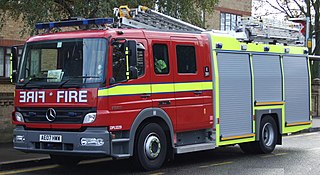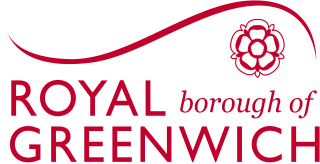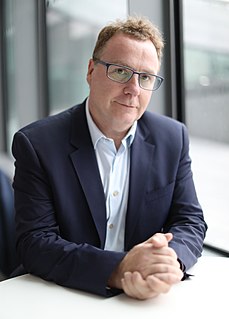Related Research Articles

The Greater London Authority (GLA), colloquially known by the metonym "City Hall", is the devolved regional governance body of Greater London, which is coterminous with the region of London and consists of the City of London and the ceremonial county also named Greater London. It consists of two political branches: the executive Mayoralty and the 25-member London Assembly, which serves as a means of checks and balances on the former. Since May 2016, both branches have been under the control of the London Labour Party. The authority was established in 2000, following a local referendum, and derives most of its powers from the Greater London Authority Act 1999 and the Greater London Authority Act 2007.

The London boroughs are the 32 local authority districts that make up the ceremonial county of Greater London; each is governed by a London borough council. The present London boroughs were all created at the same time as Greater London on 1 April 1965 by the London Government Act 1963 and are a type of local government district. Twelve were designated as Inner London boroughs and twenty as Outer London boroughs. The City of London, the historic centre, is a separate ceremonial county and sui generis local government district that functions quite differently from a London borough. However, the two counties together comprise the administrative area of Greater London as well as the London Region, all of which is also governed by the Greater London Authority.

The Greater London Council (GLC) was the top-tier local government administrative body for Greater London from 1965 to 1986. It replaced the earlier London County Council (LCC) which had covered a much smaller area. The GLC was dissolved in 1986 by the Local Government Act 1985 and its powers were devolved to the London boroughs and other entities. A new administrative body, known as the Greater London Authority (GLA), was established in 2000.

The metropolitan counties are a type of county-level administrative division of England. There are six metropolitan counties, which each cover large urban areas, with populations between 1 and 3 million. They were created in 1974 and are each divided into several metropolitan districts or boroughs.

Avon was a non-metropolitan and ceremonial county in the west of England that existed between 1974 and 1996. The county was named after the River Avon, which flows through the area. It was formed from the county boroughs of Bristol and Bath, together with parts of the administrative counties of Gloucestershire and Somerset.

The pattern of local government in England is complex, with the distribution of functions varying according to the local arrangements.
A police authority in the United Kingdom is a public authority that is responsible for overseeing the operations of a police force. The nature and composition of police authorities has varied over time, and there are now just four dedicated "police authorities" in the United Kingdom, although the term can refer to various similar successor bodies.
The Local Government Act 1985 is an Act of Parliament in the United Kingdom. Its main effect was to abolish the six county councils of the metropolitan counties that had been set up in 1974, 11 years earlier, by the Local Government Act 1972, along with the Greater London Council that had been established in 1965. In their place many single purpose authorities known collectively as 'joint authorities' were established for fire service, police and passenger transport. An ad hoc education authority was established for Inner London and a planning authority for Greater London. The legislation permitted councils to form 'joint arrangements' for waste disposal and other services that they wished to provide together. Time-limited residuary bodies were created to dispose of the assets of the former authorities.
The London Government Act 1963 is an Act of the Parliament of the United Kingdom, which created Greater London and a new local government structure within it. The Act significantly reduced the number of local government districts in the area, resulting in local authorities responsible for larger areas and populations. The upper tier of local government was reformed to cover the whole of the Greater London area and with a more strategic role; and the split of functions between upper and lower tiers was recast. The Act classified the boroughs into inner and outer London groups. The City of London and its corporation were essentially unreformed by the legislation. Subsequent amendments to the Act have significantly amended the upper tier arrangements, with the Greater London Council abolished in 1986, and the Greater London Authority introduced in 2000. As of 2016, the London boroughs are more or less identical to those created in 1965, although with some enhanced powers over services such as waste management and education.

The Association of Greater Manchester Authorities (AGMA) is the local government association for Greater Manchester, a metropolitan county in North West England. It was established in 1986 as a voluntary organisation to represent the ten district councils of Greater Manchester after the Greater Manchester County Council was abolished. AGMA develops policy, lobbies government and others, and runs a range of services designed to make strategic and tangible advances in the standard of living across Greater Manchester. Its Policy and Research Unit is based in Wigan,
The Town and Country Planning Act 1990 is an act of the United Kingdom Parliament regulating the development of land in England and Wales. It is a central part of English land law in that it concerns town and country planning in the United Kingdom. Repealed in parts by the Planning and Compensation Act 1991, it is now also complemented by the Planning and Compulsory Purchase Act 2004.

The fire services in the United Kingdom operate under separate legislative and administrative arrangements in England and Wales, Northern Ireland, and Scotland.

Havering London Borough Council is the local authority for the London Borough of Havering in Greater London, England. It is a London borough council, one of 32 in the United Kingdom capital of London. Havering is divided into 18 wards, each electing three councillors. Since May 2018, Havering London Borough Council has been in no overall control. It comprises 25 Conservative Party members, 23 Havering Residents Association members, 5 Labour Party members and 1 Independent member. The council was created by the London Government Act 1963 and replaced two local authorities: Hornchurch Urban District Council and Romford Borough Council.

Hackney London Borough Council is the local government authority for the London Borough of Hackney, London, England, one of 32 London borough councils. The council is unusual in the United Kingdom local government system in that its executive function is controlled by a directly elected mayor of Hackney, currently Philip Glanville of the Labour Party. Hackney comprises 19 wards, each electing three councillors. Following the May 2018 election, Hackney London Borough Council consists of 52 Labour Party councillors and 5 Conservative Party councillors. The council was created by the London Government Act 1963 whereby it replaced three local authorities: Hackney Metropolitan Borough Council, Shoreditch Metropolitan Borough Council and Stoke Newington Metropolitan Borough Council.

Islington London Borough Council is the local authority for the London Borough of Islington in Greater London, England. The council was created by the London Government Act 1963 and replaced two local authorities: Finsbury Metropolitan Borough Council and Islington Metropolitan Borough Council. It is a London borough council, one of 32 in the United Kingdom capital of London. Islington is divided into 16 wards, each electing three councillors. Following the May 2018 election, and a subsequent defection, Islington Council comprises 46 Labour Party councillors, 1 Green Party councillor, and 1 Conservative Party councillor. Of these 48 councillors, the Leader of the Council is Councillor Kaya Comer-Schwartz, while the Mayor is Councillor Troy Gallagher.

The regions, formerly known as the government office regions, are the highest tier of sub-national division in England, established in 1994. Between 1994 and 2011, nine regions had officially devolved functions within government. While they no longer fulfil this role, they continue to be used for statistical and some administrative purposes. While the UK was a member of the European Union, they defined areas (constituencies) for the purposes of elections to the European Parliament. Eurostat also used them to demarcate first level Nomenclature of Territorial Units for Statistics (NUTS) regions within the European Union, which in 2021 were superseded by International Territorial Level (ITL) regions. The regions generally follow the boundaries of the former standard regions, established in the 1940s for statistical purposes.

The Greater Manchester Combined Authority (GMCA) is a combined authority for Greater Manchester, England. It was established on 1 April 2011 and consists of 11 members; 10 indirectly elected members, each a directly elected councillor from one of the ten metropolitan boroughs that comprise Greater Manchester together with the directly elected Mayor of Greater Manchester. The authority derives most of its powers from the Local Government Act 2000 and Local Democracy, Economic Development and Construction Act 2009, and replaced a range of single-purpose joint boards and quangos to provide a formal administrative authority for Greater Manchester for the first time since the abolition of the Greater Manchester County Council in 1986.

Greenwich London Borough Council is the local authority for the Royal Borough of Greenwich in Greater London, England. It is a London borough council, one of 32 in the United Kingdom capital of London. Greenwich is divided into 17 wards, each electing three councillors. The council was created by the London Government Act 1963 and replaced two local authorities: Greenwich Metropolitan Borough Council and Woolwich Metropolitan Borough Council. The council meets in Woolwich Town Hall.

Greg Clark, an urbanist, is an author, global advisor, chairman and non-executive director. Clark has advised more than 200 cities, 50 national governments and a wide array of bodies including the OECD, Brookings Institution, the World Bank and the Urban Land Institute (ULI) on strategies for city development and investment. He also advises global investors and corporate service companies on how to align with city leaders.

Greater London is an administrative area in England governed by the Greater London Authority, and a ceremonial county that covers the bulk of the same area, with the exception of the City of London, which forms a separate ceremonial county. The administrative area, which has the same extent as the London Region, is organised into 33 local government districts: the 32 London boroughs and the City of London. The Greater London Authority, based in Newham as of the start of 2022, is responsible for strategic local government across the area and consists of the Mayor of London and the London Assembly.
References
- ↑ "Archived copy". Archived from the original on 11 December 2013. Retrieved 8 September 2012.
{{cite web}}: CS1 maint: archived copy as title (link) - ↑ "Archived copy". Archived from the original on 16 August 2012. Retrieved 8 September 2012.
{{cite web}}: CS1 maint: archived copy as title (link) - ↑ J.N. Berry, W.S. McGreal (2003), European Cities, Planning Systems and Property Markets